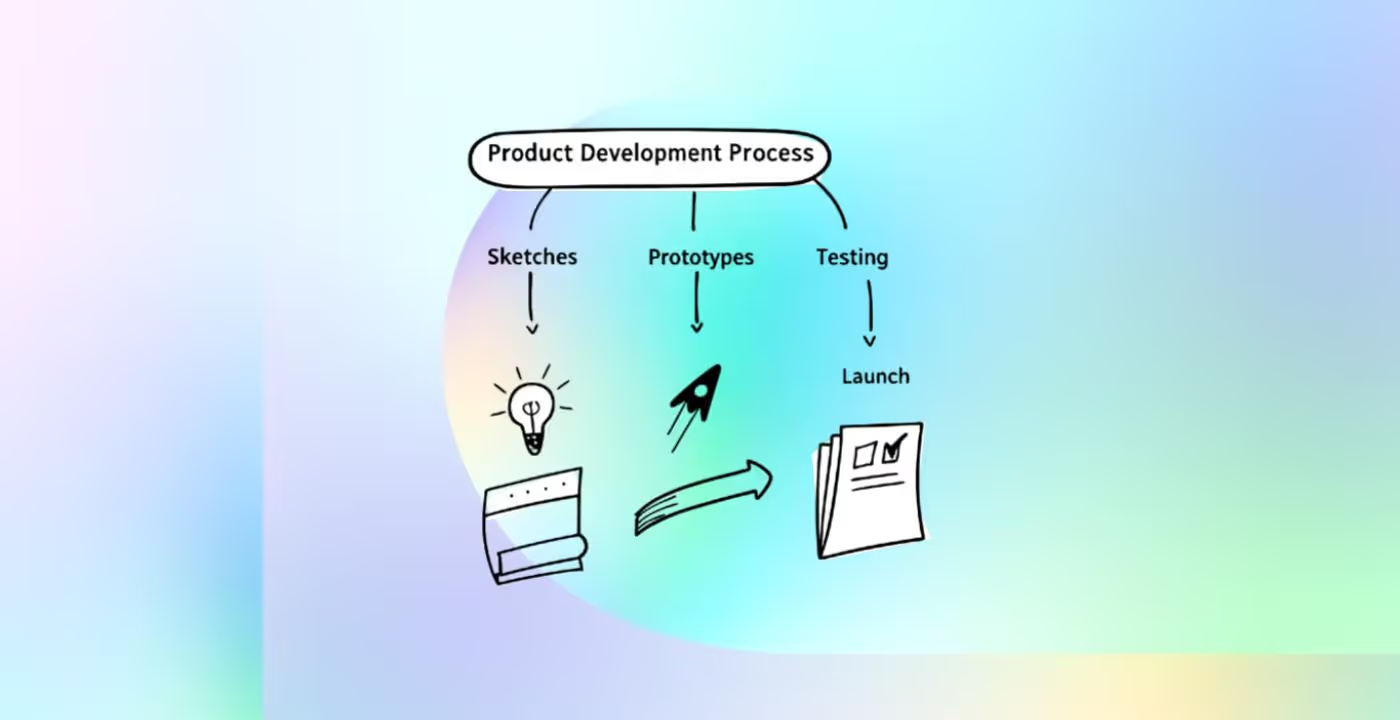
The Power of Internal Feedback & How to Leverage it
We often think of feedback as something that comes from outside—a customer’s rave review or a complaint scrawled on Yelp. But what if the most transformative insights about your business are lying dormant within your own team? Internal feedback is like the whisper of an untapped genius in your organization—a voice rarely heard but undeniably powerful. In this piece, we’ll explore why those internal voices matter more than you think—and how to truly listen.
While every business values and actively seeks customer feedback, many companies forget that internal feedback (feedback from within the organization) is just as important as customer feedback.
Of course, knowing what your customers think about your products and services is key to improving them. Yet, collecting feedback from employees can provide invaluable insights into internal challenges and innovation opportunities that might not be visible through customer feedback alone.
In this article, we’ll share why gathering internal feedback is crucial to your company’s success and how to collect it effectively.
What is Internal Feedback?
When it comes to gathering feedback, companies can collect two types of feedback: internal and external.
External feedback comes from outside the company and determines how the company and its products are perceived on the outside by customers, clients, vendors, and so on.
The point of gathering external feedback is to gain insights into customer satisfaction, market positioning, and the effectiveness of your products and services. It helps in understanding the company's strengths and weaknesses from an external perspective.
On the other hand, internal feedback comes from people within your company, such as employees, managers, and stakeholders. Some companies consider customer feedback a form of internal feedback as well, but in this article, we’ll focus on internal feedback from employees and managers only.

Internal feedback can help companies improve their internal processes, make better decisions, increase employee engagement, and streamline operations.
However, many companies are so consumed with gathering external and customer feedback that they rarely focus on encouraging their employees to share theirs.
Because of this lack of feedback culture within the company, employees feel they cannot speak freely and hold back on expressing their opinions due to fear of facing unpleasant consequences.
Importance of Internal Feedback
Internal feedback shouldn't be put on the back burner.
By gathering feedback from your employees, you can access valuable insights about operational efficiencies, pinpoint areas for innovation, and improve employee engagement.
Here's why internal feedback is important.
Internal feedback brings valuable insights
Your employees are on the frontline of your company. They’re the ones who deal with customers face-to-face, use your internal processes and workflows on a daily basis, and witness the day-to-day realities that impact your business's operations.
This means your employees have a wealth of information you might have missed. They know the little, practical parts of your business that may have slipped your mind because you’re focused on the much bigger picture.
Internal feedback drives engagement
When employees feel encouraged to share honest feedback, they feel part of the decision-making process. This sense of inclusion drives employee engagement, which leads to better productivity and performance.
What’s more, a culture of feedback also leads to better management. Managers who are open to feedback can adapt their strategies and behaviors to better meet the needs of their teams, which further boosts productivity and performance.
How to Collect Internal Feedback
When it comes to collecting internal feedback, the first thing that comes to your mind is likely the good old suggestion box.
But before you install a traditional suggestion box in your lobby, here are other, more modern ways to collect employee feedback.
Use an Idea Management Tool
The most effective way to collect employee feedback is to implement an idea management tool like Ideanote.
Idea management tools are digital suggestion boxes that provide a centralized platform where ideas can be gathered, stored, and taken through each step of their lifecycle, from collection to evaluation and implementation.
✅ Pros
With an idea management tool, employees have an always-available platform to share feedback whenever inspiration strikes. It also allows employees to submit their ideas anonymously, limiting fear of judgment or backlash.
Plus, since idea management tools are often interactive and collaborative, employees can see how their ideas are being received by their managers and coworkers. This way, employees know their feedback is being taken seriously.
❌ Cons
To ensure your employees use the idea management tool actively, you must communicate well about its importance and encourage everyone to share their feedback openly and honestly.
Use Pulse Surveys
Pulse surveys consist of multiple-choice and open-ended questions about the job, workplace, and the company’s internal processes.
Although these surveys are mainly designed to gauge the level of employee engagement and satisfaction, they can also be used to gather employee feedback.
✅ Pros
Pulse surveys are a great way to check in with your employees on a regular basis and keep a pulse on the organizational climate.
Moreover, pulse surveys provide employees with a way to share feedback anonymously so they can be honest without fear of repercussions.
❌ Cons
On the other hand, pulse surveys aren’t the most reliable way to gather employee feedback.
That's because they come with an already formulated set of questions, which may stifle spontaneous, detailed responses and leave little room for employees to share nuanced issues you may have overlooked.
Examples of free and paid pulse survey tools
Organize One-on-One Meetings
If you want to learn what your employees truly think about their jobs, the workplace, internal processes, and the company culture, you can simply ask them.
Organizing 1:1 meetings with your employees allows you to engage in deep conversations that reveal honest insights and personal perspectives.
Plus, this effort on your part shows your employees you genuinely care about their opinions, which can lead to increased employee engagement.
✅ Pros
1:1 meetings with employees create a safe space for open dialogue.
This private setting encourages employees to express honest feedback, openly discuss their concerns, and share their ideas directly with you.
❌ Cons
Although incredibly insightful, organizing a 1:1 meeting with each employee can be time-consuming.
What’s more, unless you have a platform to store their feedback and ideas, you’ll quickly find yourself overwhelmed with too much information.
Examples of questions to ask during 1:1 interviews with employees
How to Manage Internal Feedback
To receive honest feedback from your employees, you must first create a psychologically safe environment where they don’t fear repercussions for being honest. How you manage their feedback is a big part of creating an environment where everyone feels safe and confident to share it.
Here’s how you can manage internal feedback more effectively.

Instruct managers on how to respond to feedback
Managers are often unwilling to receive employee feedback due to fear of having their authority undermined or because they don’t want to change the way things are.
According to a survey by Fast Company, 67% of surveyed employees said that their managers operate under the “this is how we’ve always done it” notion. Naturally, such a negative response from managers discourages employees from sharing their feedback.
On the other hand, managers often hesitate to give feedback to employees. A survey by Interact found that 37% of managers feel uncomfortable sharing feedback because they feel that employees will respond to it negatively.
To create a positive culture of feedback within your company, you must ensure that managers know how to effectively receive, give, and respond to feedback.
Create a feedback loop
A feedback loop is a continuous cycle where feedback leads to actions, and the results of those actions generate more feedback. To create this loop, employees and managers should quickly act on the feedback they receive, integrate regular feedback into meetings, and continuously adjust based on the feedback received on those changes.
Have a clear feedback process
A huge part of creating an open feedback culture is setting a clear idea management process employees can rely on.
Being transparent about how you manage their feedback will give employees the confidence to contribute ideas and opinions openly and honestly.
Although managing feedback may seem overwhelming, it becomes more manageable if you use an idea management platform like Ideanote.
If you're gathering feedback through surveys and interviews, make sure you have a system in place to evaluate the feedback, select the most important ideas, and decide which ones to act upon.
Communicate around received feedback
Once you receive feedback from your employees, make sure to communicate around it. Let your employees know how their feedback was received, why it was or wasn’t accepted, and which ideas you’ll be implementing.
If you’ve established an open culture of feedback where ideas flow consistently, organize regular reports or meetings where you share the results of implemented changes and recognize the contributors of those ideas.
This approach shows your employees that they have a say in what’s going on and changing in the company and are an active part of its future.
Next up to Read:
Unleash Team Potential with Powerful Feedback Tools




